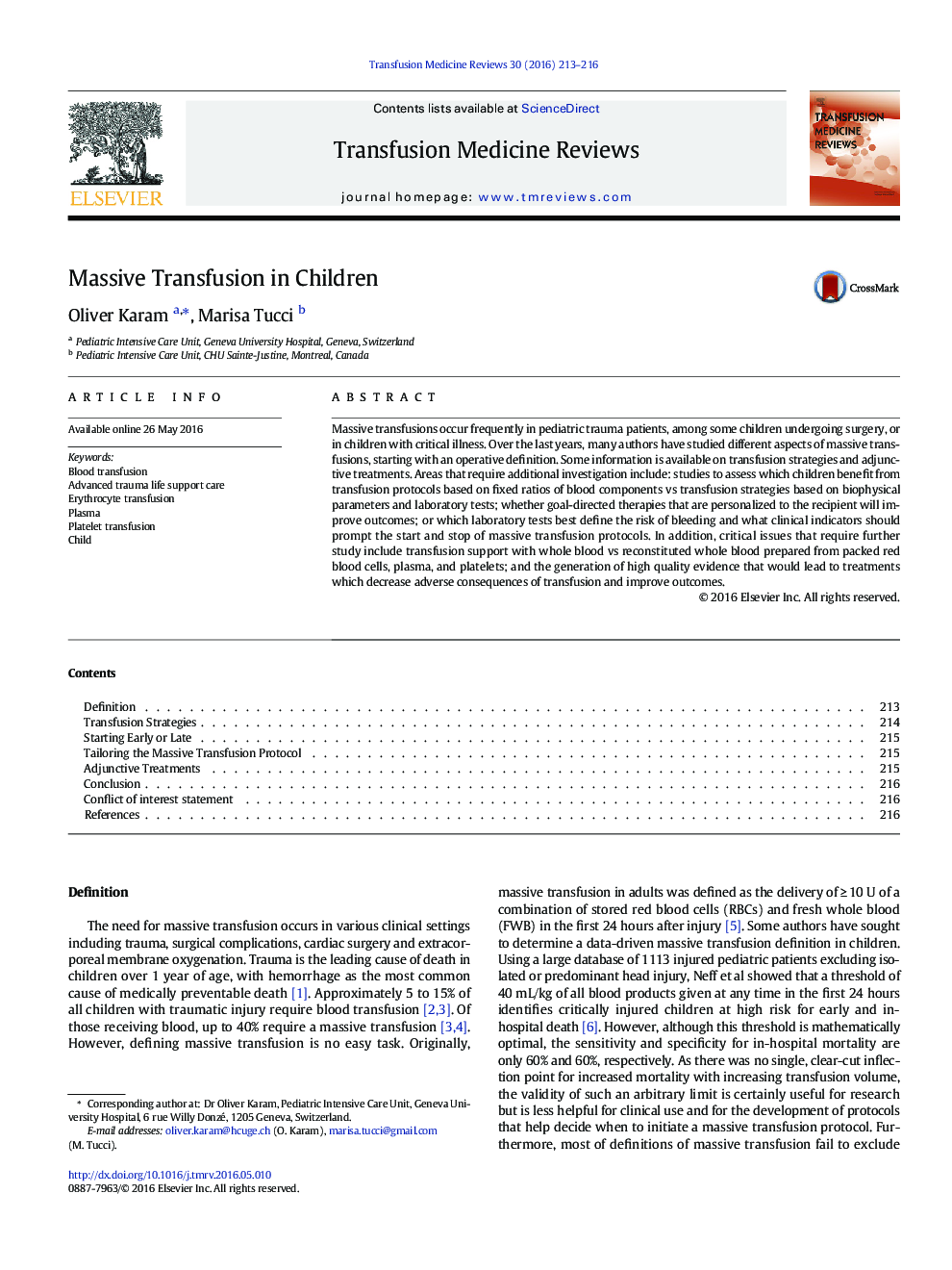| Article ID | Journal | Published Year | Pages | File Type |
|---|---|---|---|---|
| 3336446 | Transfusion Medicine Reviews | 2016 | 4 Pages |
•Massive transfusions occur frequently in trauma and critically ill children.•Little controlled clinical outcomes data are available on transfusion strategies and adjunctive treatments.•Many areas, such as goal-directed therapies, require additional investigations.
Massive transfusions occur frequently in pediatric trauma patients, among some children undergoing surgery, or in children with critical illness. Over the last years, many authors have studied different aspects of massive transfusions, starting with an operative definition. Some information is available on transfusion strategies and adjunctive treatments. Areas that require additional investigation include: studies to assess which children benefit from transfusion protocols based on fixed ratios of blood components vs transfusion strategies based on biophysical parameters and laboratory tests; whether goal-directed therapies that are personalized to the recipient will improve outcomes; or which laboratory tests best define the risk of bleeding and what clinical indicators should prompt the start and stop of massive transfusion protocols. In addition, critical issues that require further study include transfusion support with whole blood vs reconstituted whole blood prepared from packed red blood cells, plasma, and platelets; and the generation of high quality evidence that would lead to treatments which decrease adverse consequences of transfusion and improve outcomes.
